Autopsy deconstructs the exact manner of tigress T1's death and exposes the lies of its hunters

Tigress T1 was shot dead on Nov 2
A report from the post-mortem of tigress T1 has driven a bullet right through the state's claims that the big cat was shot in self-defence. A representative of the state forest department concluded in the report that T1 was 'facing away from the shooter', and the tranquiliser dart showed no sign of being fired by a tranq gun.
ADVERTISEMENT
The state claims that tigress T1 was shot in self-defence, but that's not what the pictures from the post-mortem say. mid-day has accessed the post-mortem witness report, which concludes that T1 "was facing away from the person who fired the bullet."
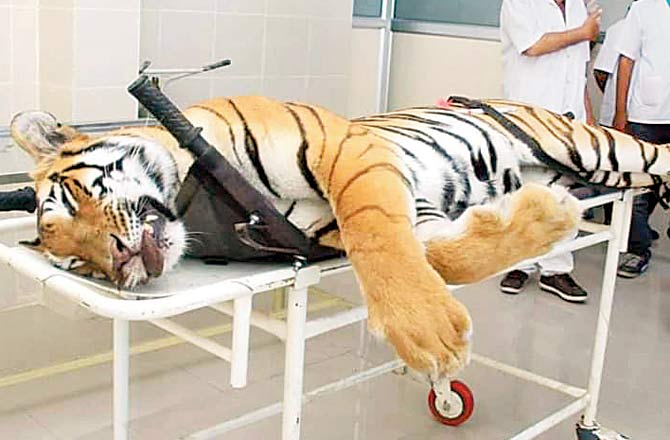
The state said T1 was shot while she was charging at the team
The report includes diagrams and pictures to support this deduction and another, equally incriminating, finding — the dart embedded in the left thigh did not appear to have been fired from a tranquilising rifle, since there was no damage to the underlying tissue and the syringe was only embedded superficially.
This conclusion is in line with activists' allegations that the tigress's shooting was not in self-defence, and the body may have been dressed up with the tranquiliser dart to cover up the killing.

After the autopsy, the body was burnt in a funeral pyre adjacent to the post-mortem room
The post-mortem witness report, filed by wildlife biologist Milind Pariwakam on behalf of the Maharashtra Forest Department, is in direct contradiction to the state's claims that the tigress was shot while she was charging at the search team (see box).
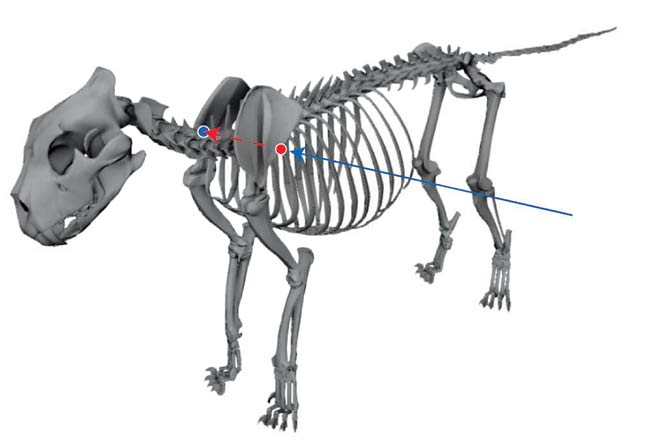
Annexure 1 to the report show the entry point of the bullet (near the third rib on the left flank) and the place where it was lodged (two major pieces lodged on the right shoulder blade). The arrows show the trajectory of the bullet. The report states, "...The entry point, place where bullet was lodged and the trajectory of the bullet that show that the animal was facing away from the person who fired the bullet."
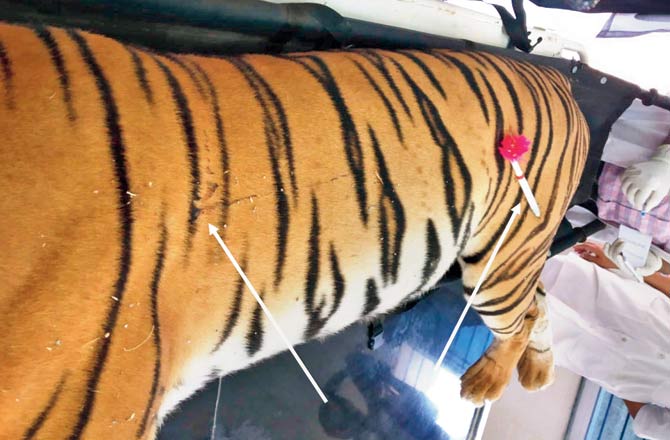
The left flank of the tigress, displaying the bullet's entry point near the shoulder and the tranquiliser dart on the left thigh.
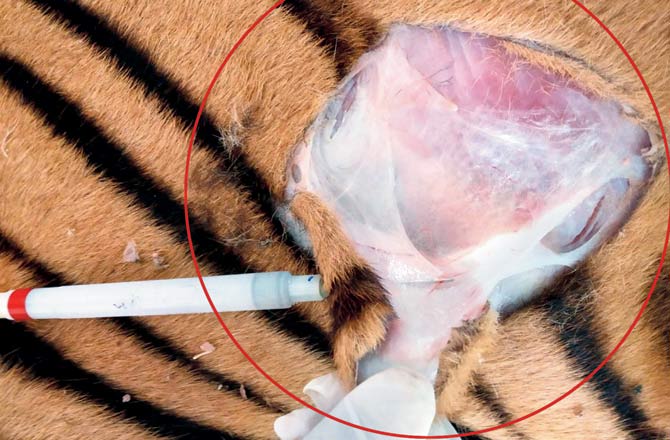
This picture was taken after lifting the skin flap over the left thigh, where the tranq dart was embedded. It demonstrates two major points. Firstly, there is no haematoma (blood clot) in the tissue. The report states, "Dart fired from a syringe projector (tranquilising rifle) always leaves a significant and obvious haematoma, which was not observed in this case." Secondly, the cannula (needle) of the dart is "clearly visible in the sub-cutaneous layer. Lack of penetration into underlying muscular layer also visible." Tranquilising rifles usually shoot darts at great force, driving them deep into the tissue.
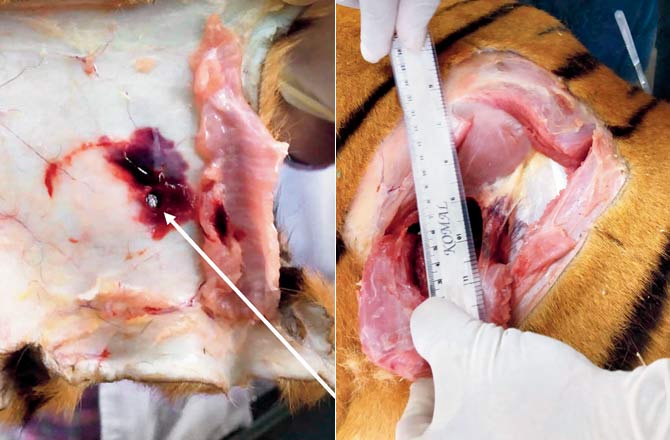
The autopsy experts remove a flap of skin from the tigress's left flank to show the bullet hole, and (right) a close-up view of the bullet's entry point during dissection.

The veterinarian's finger points to the location where the bullet was lodged near the right scapula. The report states, "The bullet was found in two major pieces lodged on the right scapula. The scapula was also fractured and pieces of the scapula with the two bullet pieces were collected. There were tiny fragments of the bullet."
State report on shooting
In its report on the November 2 shooting, the state had said that Asghar Ali, son of controversial sharpshooter Nawab Shafat Ali Khan, shot at the tigress while she was charging at shooting team in their open jeep. It stated: "When certain about the identity [of the tigress], a team member attempted a dart that hit it, but the tigress moved back and charged at the team, which was in a open gypsy. As an act of self-defence, Mr Asghar fired from a distance of about 8-10 m. The tigress died on the spot."
Catch up on all the latest Crime, National, International and Hatke news here. Also download the new mid-day Android and iOS apps to get latest updates
 Subscribe today by clicking the link and stay updated with the latest news!" Click here!
Subscribe today by clicking the link and stay updated with the latest news!" Click here!







